
Inhabiting Liminal Spaces: Probing Luis Antonio Santos’ Covid-19 Body of Work
“Only if we are capable of dwelling, only then can we build.” – Martin Heidegger
To find oneself involuntarily locked in a space without certainty of eventual freedom, without any assurance of return to normalcy, without hope for exhalation, such was the reality that Luis Antonio Santos found himself in during much of the Covid-19 pandemic.
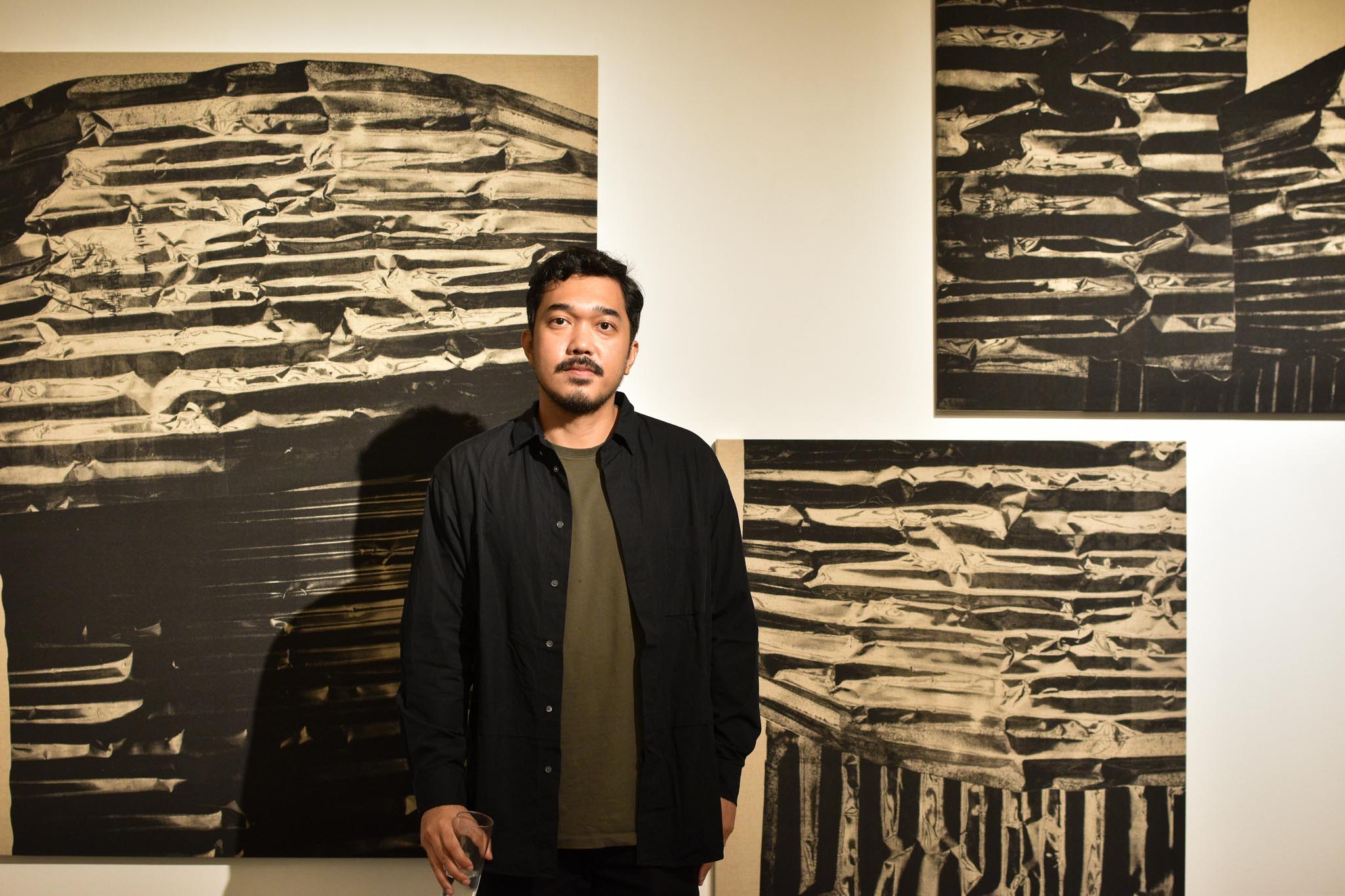
When days turned into weeks and weeks turned into months and months turned into years, when dystopian imaginings turned into a visceral, palpable nightmare shared and lived by humanity the world over, Santos, one of the leading contemporary Filipino visual artists of his generation, confronted the existential need to reframe his very notion of living and being.
As he found himself locked in his home with nothing certain except for the possibility of his own mortality and that of everyone he holds dear, as he found himself subjected to circumstances beyond his control, he surrendered to the wisdom of having to completely inhabit his own liminal space. Santos, though constantly perturbed by the reality of the helplessness and fragility of his own existence against a pandemic yet without a cure, risked creating an extensive body of work at a time when materials were scarce, when museums and galleries were indefinitely closed, and when all the mechanisms that run the art world on a global scale were ground to a screeching halt. It was a time marked by death, isolation, longing, confusion, fear, and brokenness. For Santos, the existential need to constantly create was met with the risk of depleting his finite financial resources needed for his very survival. As Santos was physically and psychologically stripped down as an individual, his agency as a human being prompted him to not only produce works that would preserve his own sanity but also carefully examine both his physical and psychological liminal spaces. Santos created works that both probed his immediate environment and revealed facets of his innermost thought world.
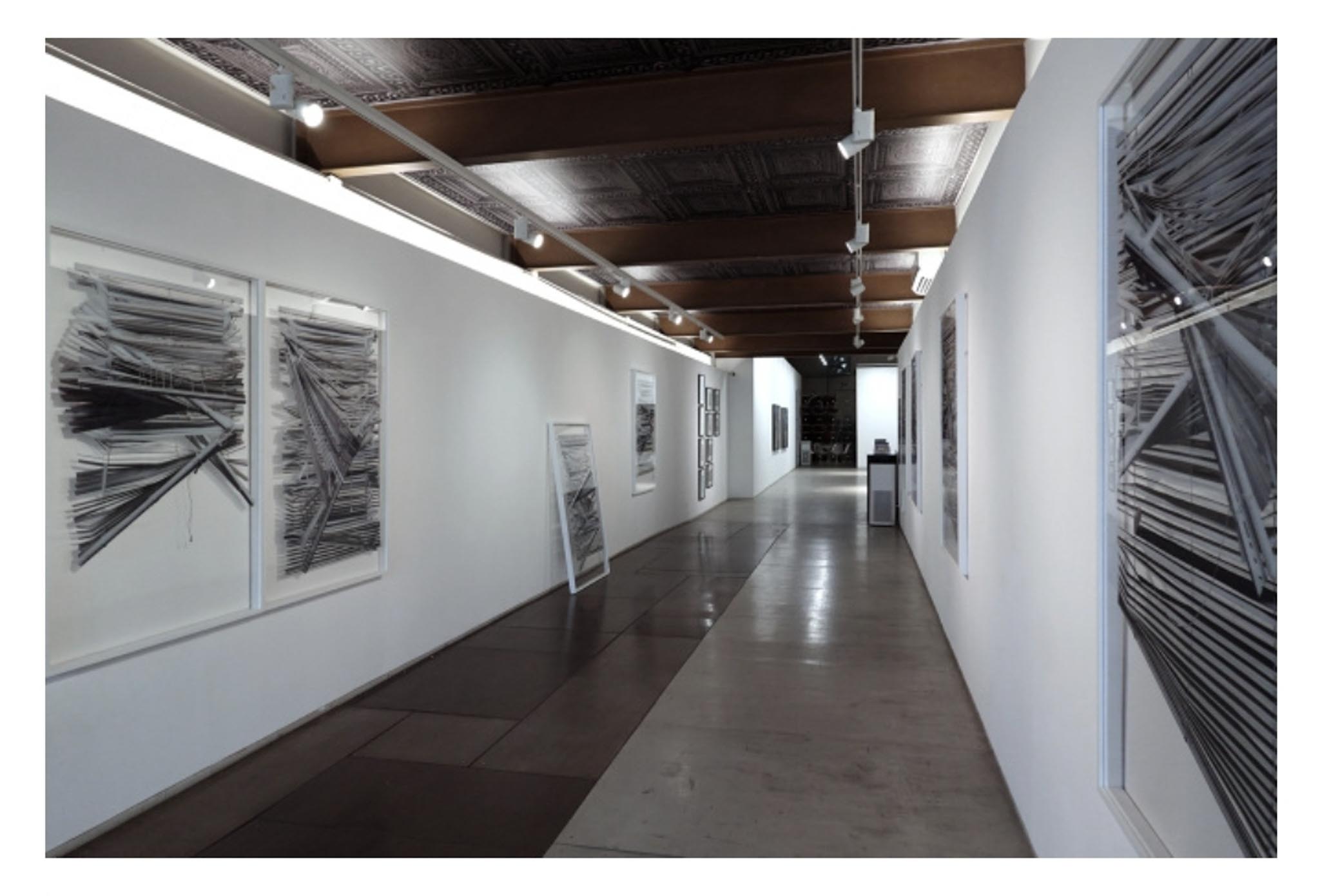
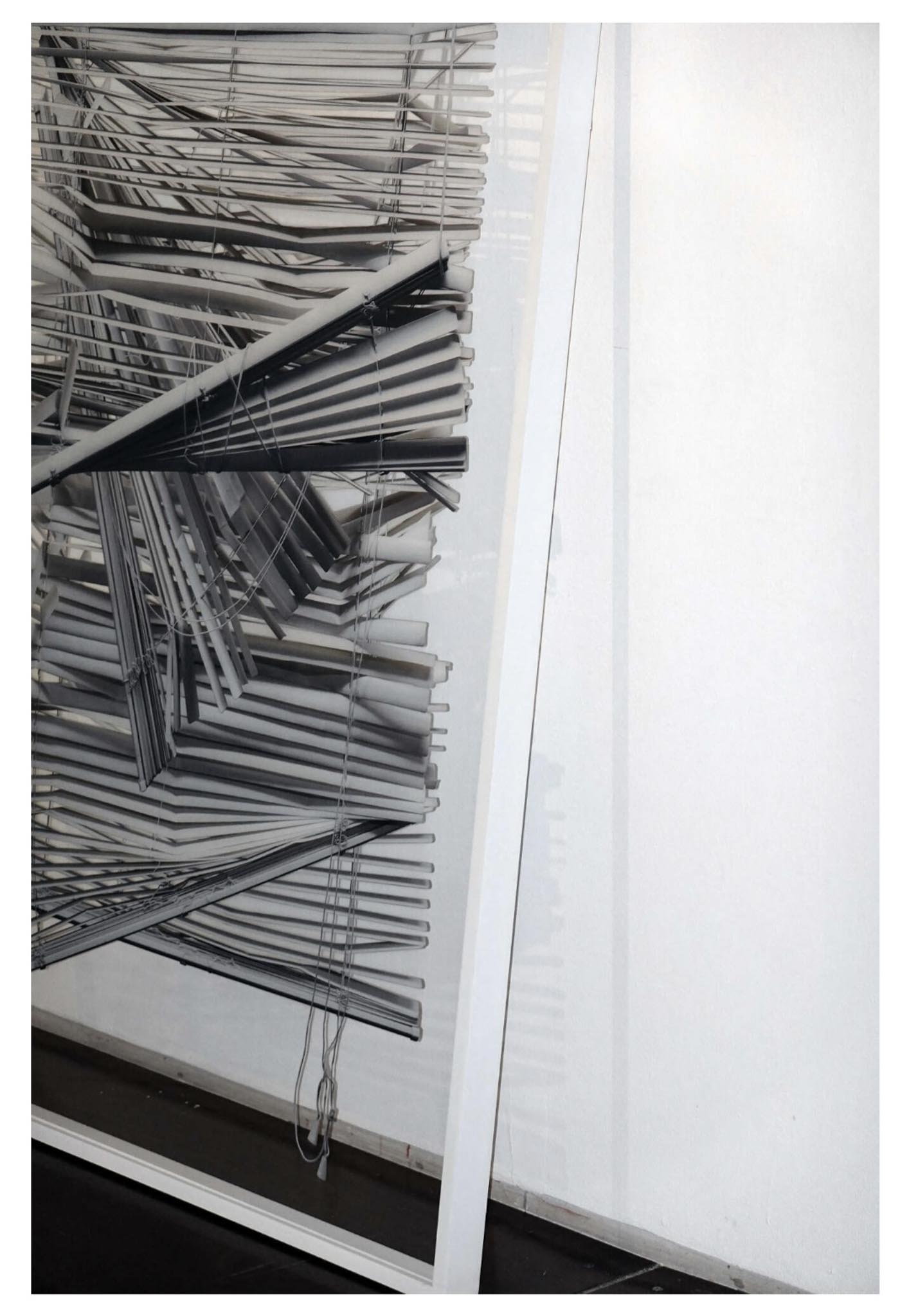
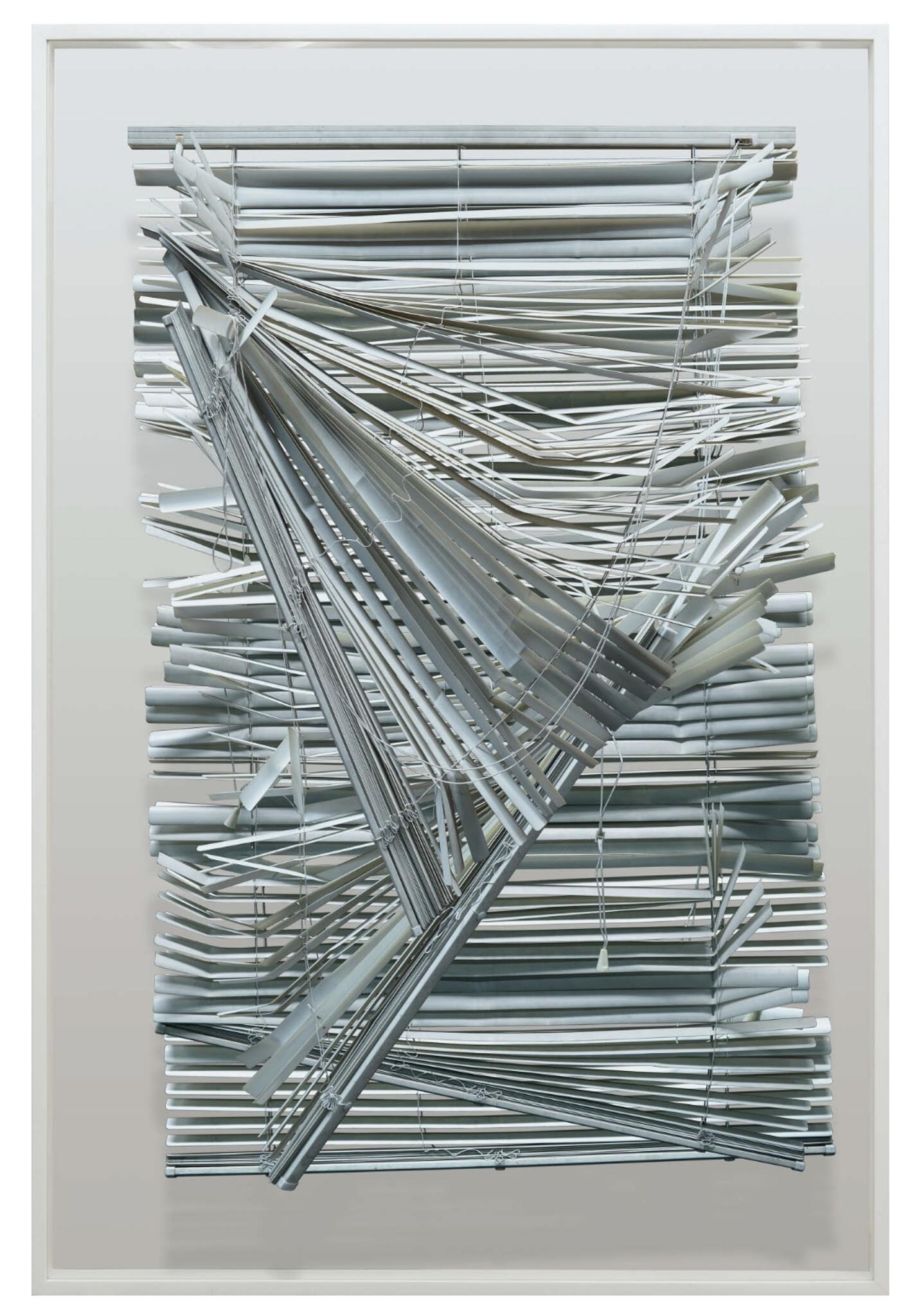
To redefine what it meant to be a creative being amidst a raging global health crisis, Santos inhabited his liminal space by risking both his financial stability and his mental health by publicly exposing his most human of struggles as seen in his three conceptually interconnected solo exhibitions mounted during the covid-19 pandemic. “Each Time I Looked Around, the Walls Moved in a Little Tighter” at The Drawing Room, “Threshold” at Silverlens Gallery, and “An Echo Made Tangible / (sun in an empty room)” at MoSpace, the triumvirate of solo exhibitions of Luis Antonio Santos during the pandemic, embodied in different media and modes of representation the artist’s grueling pandemic odyssey. In varying degrees and frequencies, Santos articulated his personal struggles as a visual artist who, for nine agonizing months, lost his own sense of taste and smell as a result of contracting a severe strain of Covid-19. The absence of the most basic of sensory experiences precipitated the exploration and development of new iconography largely based on the photographic image. Santos’ new iconography featured digitally manipulated photographs of tattered blinds, achromatic photographs of local flora printed on transparent acrylic glass, and silkscreened composite/layered images of barbed wire fences and photographs of Philippine landscapes. What coincided with Santos’ loss of his own sense of taste and smell was his conspicuous focus on a new visual language centered on the photographic image that is visibly stripped of color, vibrancy, and vitality. Santos’ pandemic imagery was, in large part, the artist’s nuanced reflection on his first-hand experience of Covid-19. He conveyed, through his visual language, a world that is familiar yet distant, lush yet dreary, dynamic yet dilapidated.
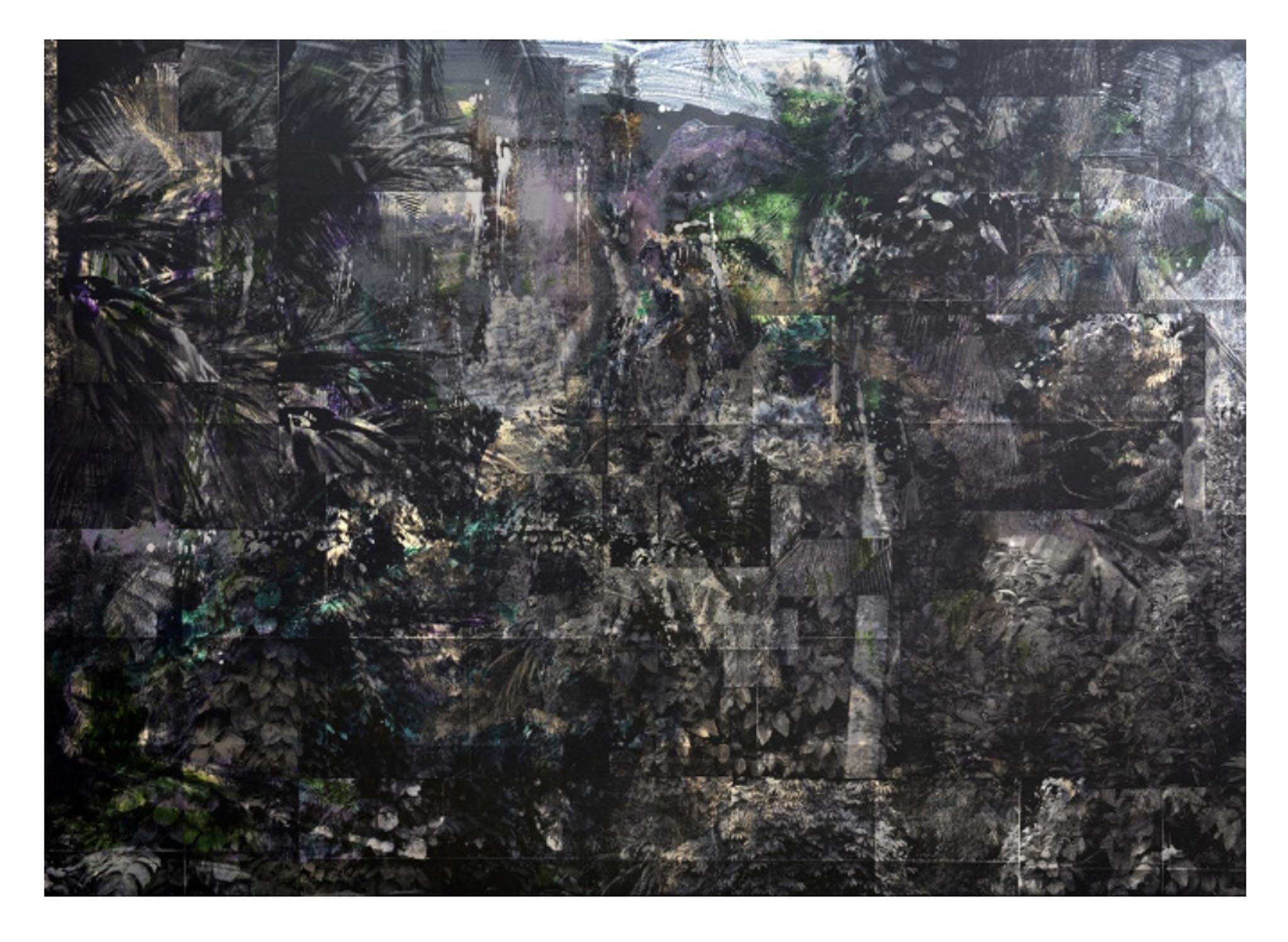
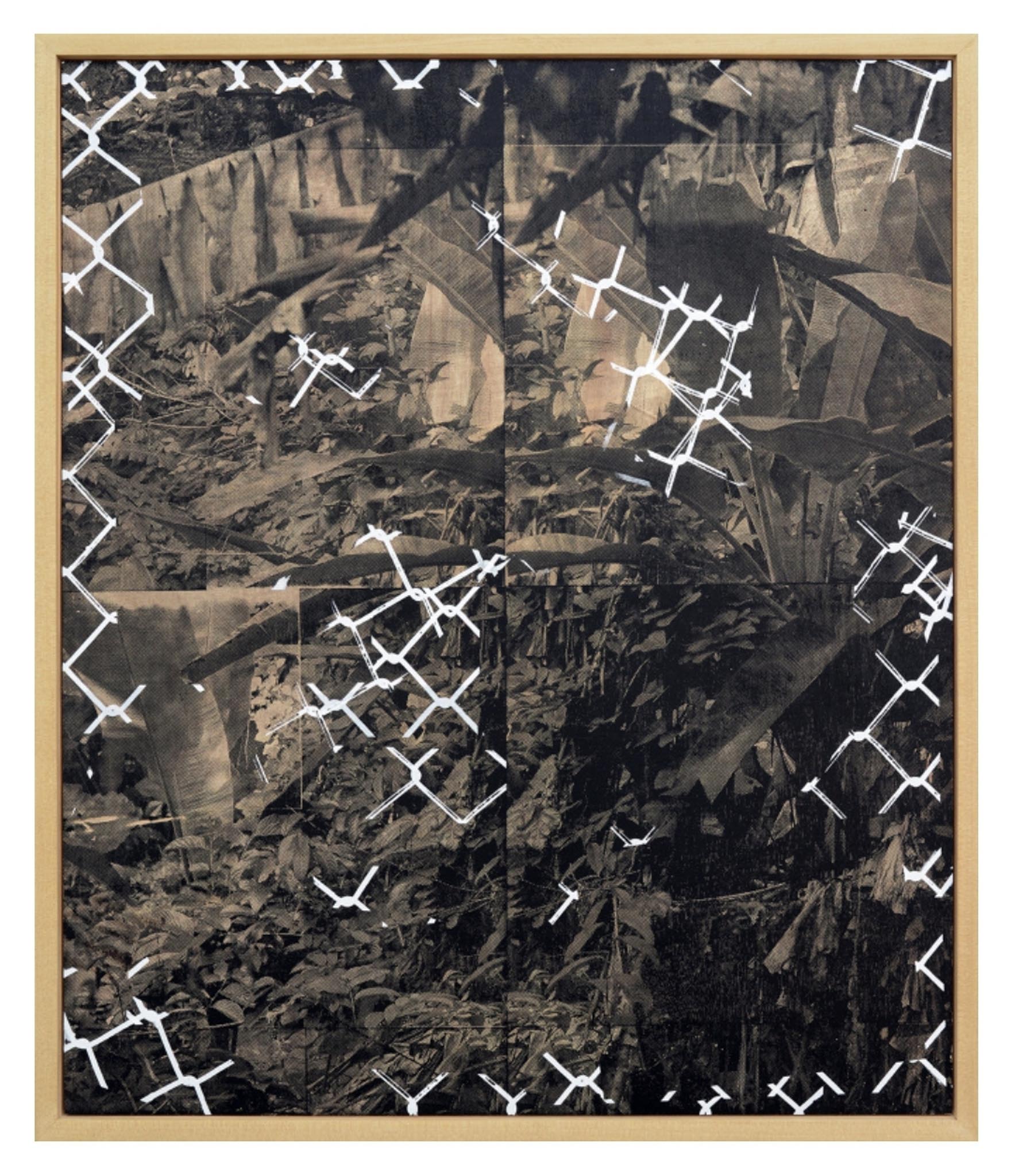
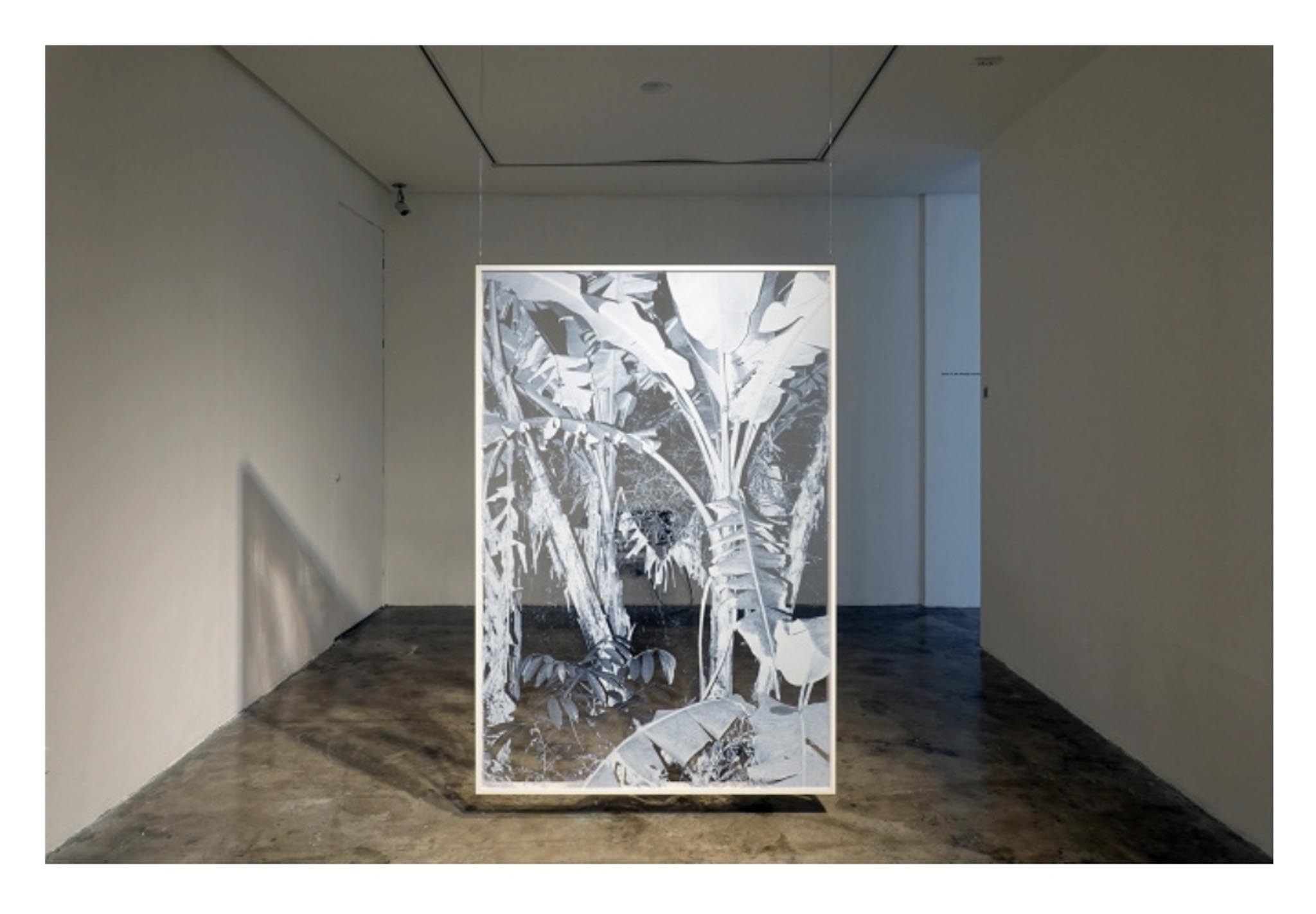
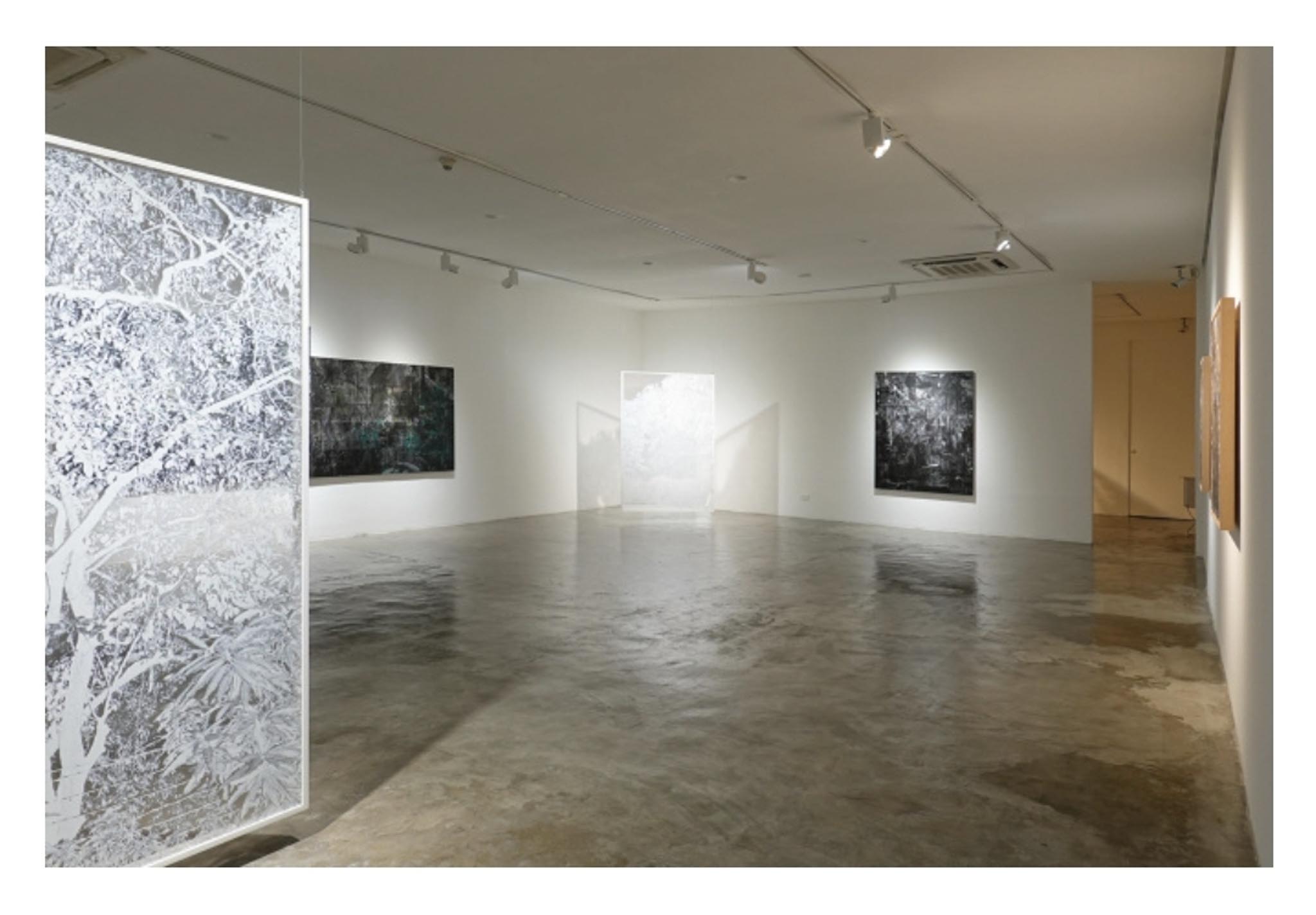
According to Santos, his triumvirate of pandemic solo shows is succinctly reflective of his troubled state of mind while living in prolonged involuntary lockdown. Quoting Santos, “‘Each Time I Looked Around, the Walls Moved in a Little Tighter’ at The Drawing Room is about experiencing the early lockdowns and about being stuck in a liminal space with an environment of constant fear and uncertainty. ‘Threshold’ at Silverlens Gallery is about an attempt to embody what it was like living, coping, and accepting life in a liminal space marked by what seemed to be a never-ending pandemic. ‘An Echo Made Tangible / (sun in an empty room)’ at MoSpace is about living with the reality of sustained trauma.”
The concept of “Threshold” itself touches on the levels of risk that Santos deliberately chose to take amidst a global landscape in a constant state of flux. A threshold, a point of transition or crossing that is often associated with uncertainty and the unknown, was exactly what Santos sought to traverse wholly and wholeheartedly despite his unrelenting mental health struggles and his dwindling financial resources at the time. However, despite the dystopian landscape that Santos found himself in, all was not lost in his pandemic body of work. In fact, it can be argued that Santos’ troika of pandemic exhibitions was an act of faith and a declaration, albeit a bittersweet one, of the artist’s hope for a restored world.
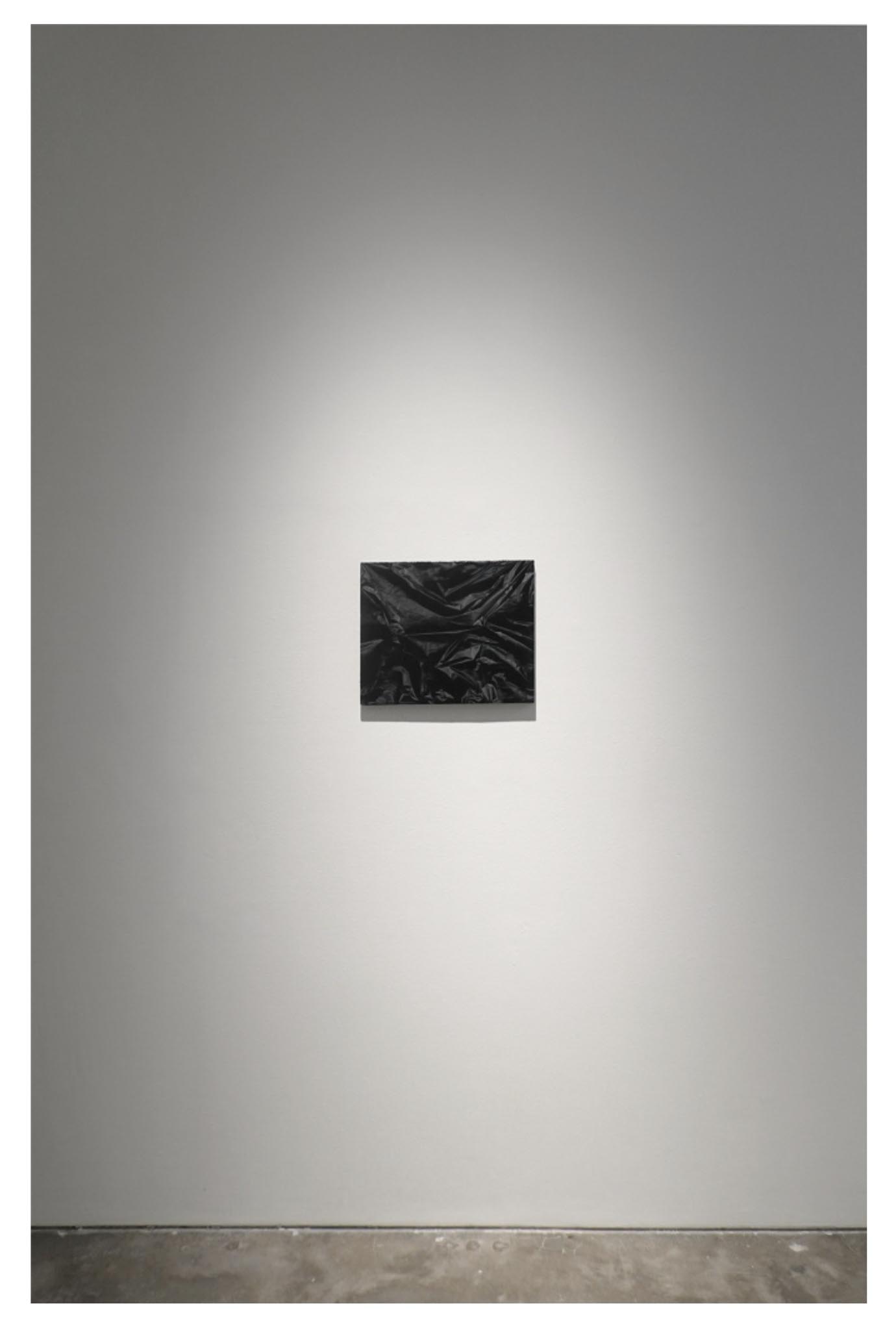
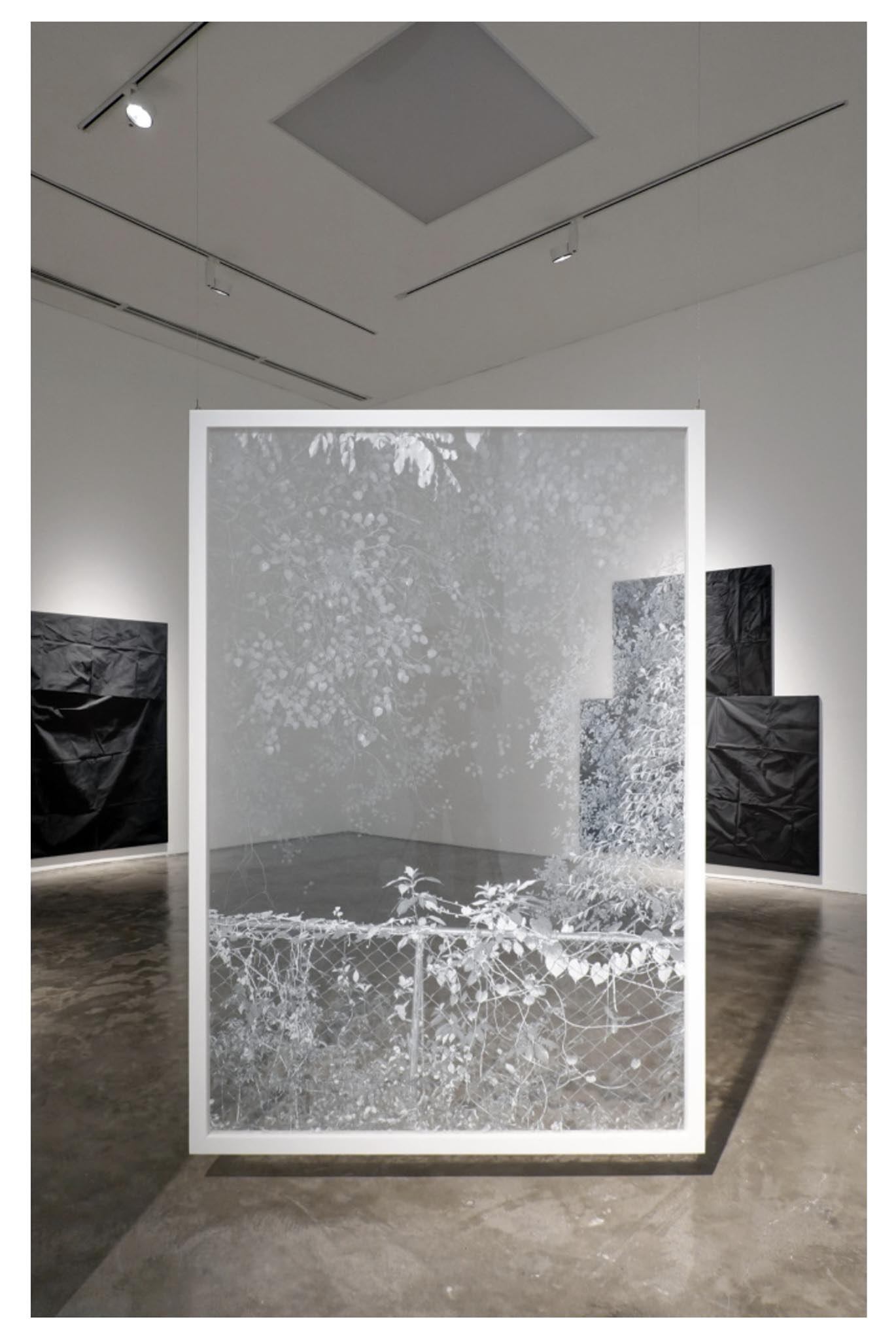
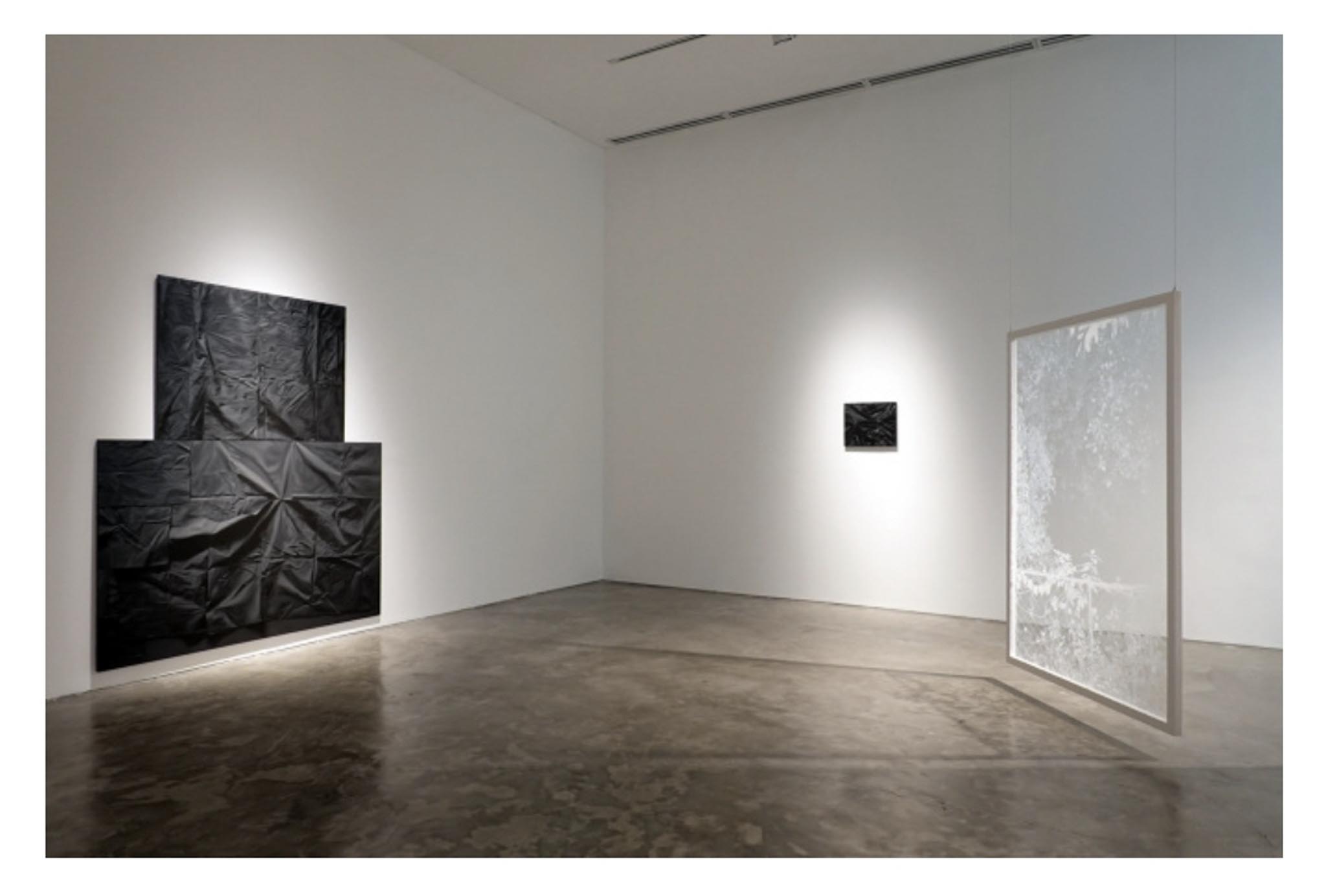
Santos’ very act of creation trumped all his doubts and fears. By embracing the risk of exploring his own physical and psychological liminal spaces, where boundaries are blurred and new possibilities emerge, Santos unexpectedly opened himself to the possibility of healing. His purposive act to create at a time when all hope was nearly lost opened within him a safe space where he could face his traumas, anxieties, and fears without losing himself amidst all the internal and external noise. Needless to say, the risk he had taken to find himself paid off. Quoting Louise Bourgeois, “Art is restoration: the idea is to repair the damages that are inflicted in life, to make something that is fragmented – which is what fear and anxiety do to a person – into something whole.” In the end, it was at the exact moment when Luis Antonio Santos decided to truly inhabit his liminal spaces that fear turned into healing, and darkness turned into light.
About Luis Antonio Santos
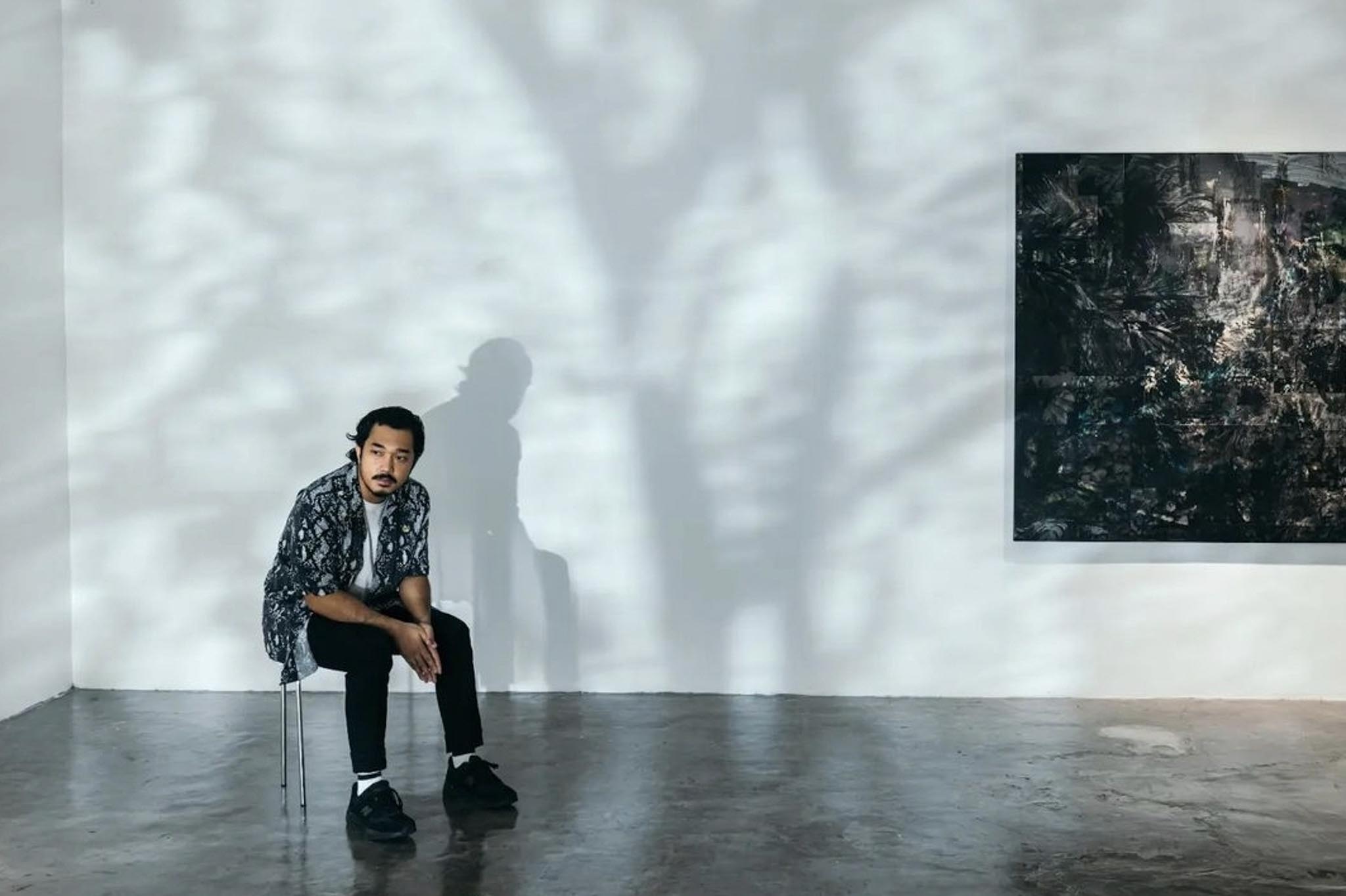
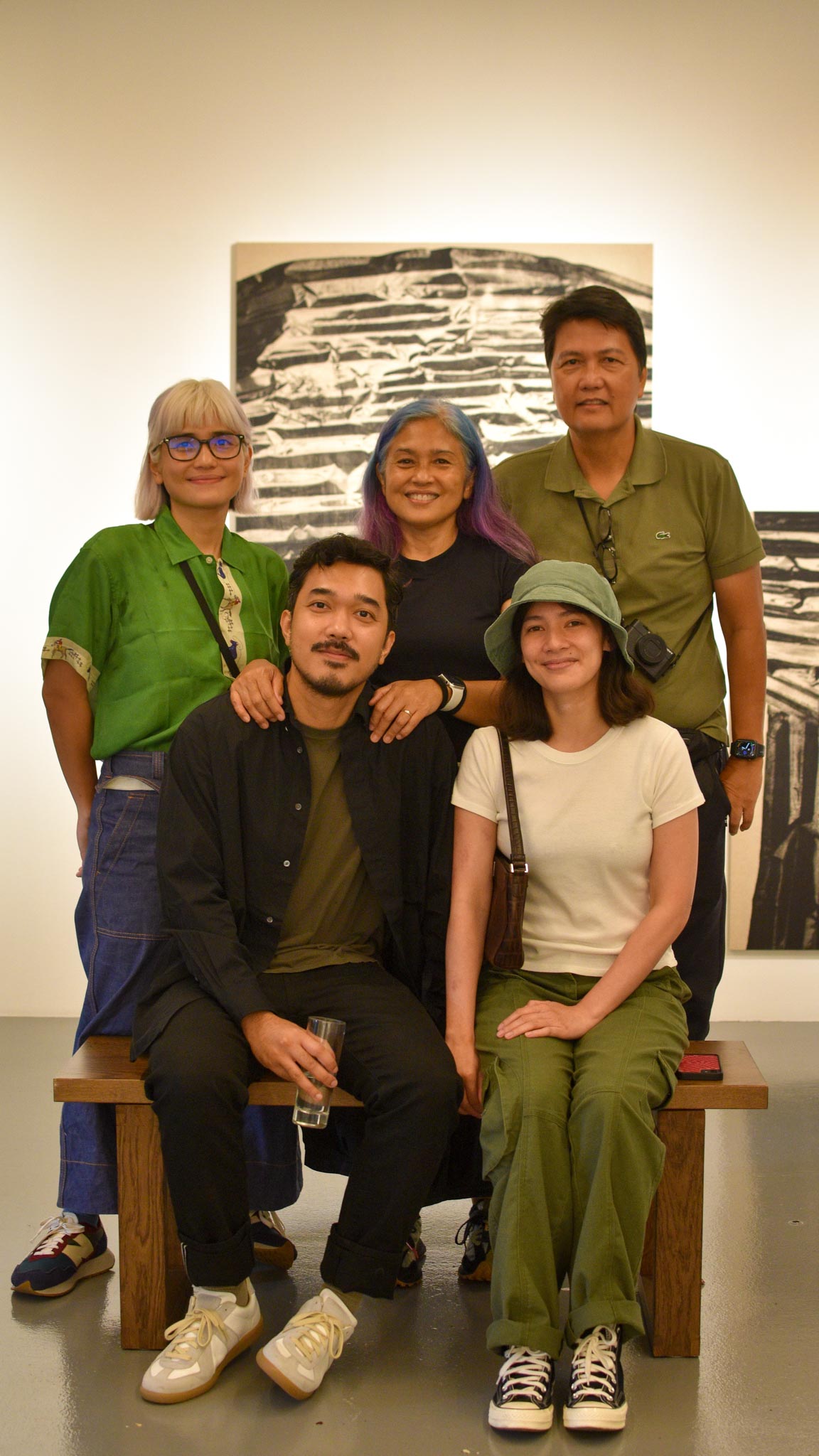
Luis Antonio Santos (b. 1985) lives and works in Quezon City as a visual artist working primarily with painting and photography. His practice revolves around the tension between contradictions and engages with themes relating to identity using time, space, and memory as points of departure. Oil painting, screenprinting, and digitally manipulated photography as aesthetic strategies are often employed along with the use of everyday utilitarian materials as subject matter to examine these ideas. He has been exhibiting since 2010 with solo shows at Singapore (Fost Gallery) and Manila (West Gallery, Silverlens Gallery, Blanc Gallery, Finale Art File, MO_Space, Artinformal and the Drawing Room.) He has also been included in several group exhibitions in Manila, New York (Jane Lombard Gallery), Beijing (Tang Contemporary), Singapore, Hong Kong (Art Central), Athens (Athens Video Art Festival) and Malaysia. He was recently included as a finalist for the Sovereign Asian Art Prize (2023). He has also been shortlisted for the Ateneo Art Awards three times (2014, 2015, 2023) and has been nominated for the Signature Art Prize, Singapore Art Museum (2018).
About The Author
Patrick de Veyra (b. 1982) is a Manila-based visual artist, art educator, and writer. He graduated magna cum laude with a studio arts degree at the University of the Philippines Diliman College of Fine Arts in 2005. He is also an alumnus of the Philippine High School for the Arts (PHSA) and recipient of the Outstanding Artist Award for Visual Arts and the Makiling Academe and Research Institute for the Arts (MARIA) Scholarship Award, an honorific scholarship awarded by the Cultural Center of the Philippines to PHSA’s top five graduates.
During his formative years as a visual artist, he was mentored by Prof. Ricarte Puruganan, one of the “Thirteen Moderns” in Philippine art history.
He has been exhibiting since 1996 with solo shows at the Ayala Museum, West Gallery, the Philippine National Bank Financial Center, and Art Cube Gallery. He has also been included in several group exhibitions at the Cultural Center of the Philippines, GSIS Museum, the University of the Philippines Diliman College of Fine Arts Gallery, Mag:net, Faculty Projects, and Pintô Museum.
In 2004, he won the grand prize for mixed media in the University of the Philippines Diliman College of Fine Arts’ 1st Studio Arts Annual Student Competition. In 2006 and 2007, he was invited by Sunshine School in Brunei Darussalam to revitalize the school’s visual arts program. In 2007, he presented the ‘The Best Ideas Come From The Storage Room’, an ad campaign which featured robot assemblages by his Filipino primary school students, at the ASEAN Plus China and Korea Youth Creativity Expo in Jakarta, Indonesia.
In 2006, he visited Singapore, Indonesia, Malaysia, Brunei Darussalam, and Japan to participate in roundtable discussions with leaders of national and local governments, and to take part in grassroots programs for cross-cultural understanding as a Philippine youth ambassador selected by the Office of the President of the Philippines-National Youth Commission to the 33rd Ship for Southeast Asian Youth Program (SSEAYP).
READ MORE: Finding Order Within Chaos: Patrick de Veyra’s Fifth Solo Show
Photos were provided by the author.


